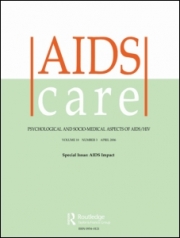Posted on November 07, 2015
Source: AIDS Care

Effect of savings-led economic empowerment on HIV preventive practices among orphaned adolescents in rural Uganda: results from the Suubi-Maka randomized experiment
Larissa Jennings, Fred M. Ssewamala & Proscovia Nabunya
Improving economic resources of impoverished youth may alter intentions to engage in sexual risk behaviors by motivating positive future planning to avoid HIV risk and by altering economic contexts contributing to HIV risk. Yet, few studies have examined the effect of economic-strengthening on economic and sexual behaviors of orphaned youth, despite high poverty and high HIV infection in this population. Hierarchal longitudinal regressions were used to examine the effect of a savings-led economic empowerment intervention, the Suubi-Maka Project, on changes in orphaned adolescents’ cash savings and attitudes toward savings and HIV-preventive practices over time. We randomized 346 Ugandan adolescents, aged 10–17 years, to either the control group receiving usual orphan care plus mentoring (n = 167) or the intervention group receiving usual orphan care plus mentoring, financial education, and matched savings accounts (n = 179). Assessments were conducted at baseline, 12, and 24 months. Results indicated that intervention adolescents significantly increased their cash savings over time (b = $US12.32, ±1.12, p < .001) compared to adolescents in the control group. At 24 months post-baseline, 92% of intervention adolescents had accumulated savings compared to 43% in the control group (p < .001). The largest changes in savings goals were the proportion of intervention adolescents valuing saving for money to buy a home (ΔT1−T0 = +14.9, p < .001), pursue vocational training (ΔT1−T0 = +8.8, p < .01), and start a business (T1−T0 = +6.7, p < .01). Intervention adolescents also had a significant relative increase over time in HIV-preventive attitudinal scores (b = +0.19, ±0.09, p < .05), most commonly toward perceived risk of HIV (95.8%, n = 159), sexual abstinence or postponement (91.6%, n = 152), and consistent condom use (93.4%, n = 144). In addition, intervention adolescents had 2.017 significantly greater odds of a maximum HIV-prevention score (OR = 2.017, 95%CI: 1.43–2.84). To minimize HIV risk throughout the adolescent and young adult periods, long-term strategies are needed to integrate youth economic development, including savings and income generation, with age-appropriate combination prevention interventions.